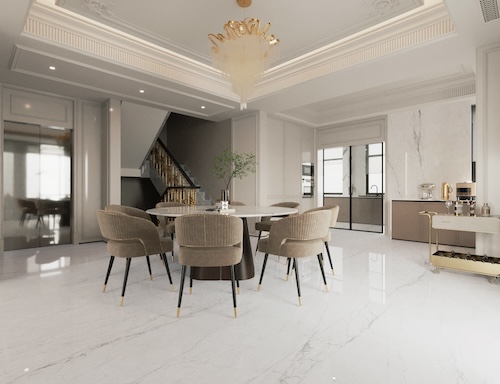

In the realm of architectural decoration, the choice of material is pivotal in ensuring not only aesthetic appeal but also durability and quality. Rucobond, a renowned producer and exporter of various aluminum and stone panels since 2013, has recently introduced its Sintered Stone Slabs product line, offering a new, innovative solution for architects and designers. But how does it stack up against the widely used Quartz? Let’s delve into a detailed comparison to unveil the secrets behind these two materials.
1. Sintered Stone Slabs: A New Age Material
Sintered Stone is celebrated for its robustness, versatility, and eco-friendly properties. Originating from natural stone, it undergoes a process that mimics natural stone formation, involving heat and pressure to create a lightweight yet durable material. Rucobond’s Sintered Stone Slabs are not only a testament to quality but also a nod towards sustainable building and design.
Key Features:
2. Quartz: The Time-Tested Choice
Quartz, a mainstay in the architectural decoration sphere, is prized for its consistency, durability, and wide range of designs. It is an engineered stone, meaning it combines the robustness of stone with the flexibility of manufacturing, allowing for a plethora of design options.
Key Features:
3. Head-to-Head: Sintered Stone vs. Quartz
While both materials offer a range of benefits, they cater to different needs and applications in the architectural world.
4. Rucobond: Pioneering Quality and Innovation
At Rucobond, we are dedicated to providing top-tier materials that cater to the diverse needs of our global clientele. With certifications from SGS, CE, and ISO, and a strong foothold in overseas markets like Europe, Southeast Asia, and the United States, we ensure that our products, from Aluminum Composite Panels to our new Sintered Stone Slabs, stand synonymous with quality and reliability.
Choosing the right material for architectural decoration involves considering various factors, including aesthetics, durability, cost, and environmental impact. Both Sintered Stone Slabs and Quartz offer unique advantages, catering to different needs and preferences. At Rucobond, we are here to guide you through these choices, ensuring that your projects not only shine but also stand the test of time.
Name: Gina Chen
Mobile:+86-189-2412-4951
Tel:+86-189-2412-4951
Whatsapp:8618924124951
Email:gina@rucobond.com
Add:No.9 Building, Loteam Industry Park, Huangge Town, Nansha District, Guangzhou, China